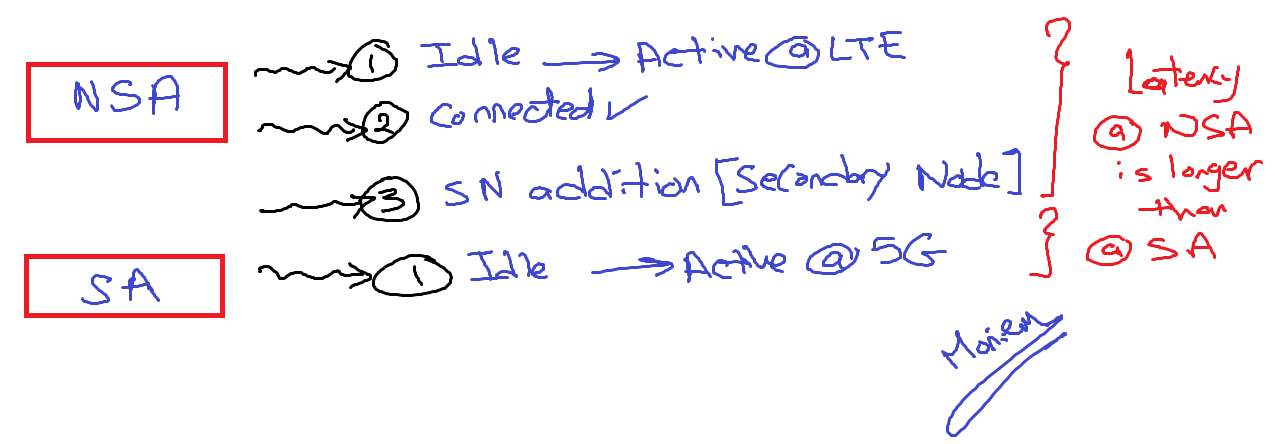The latency of the idle-to-active procedure in NSA is larger than in SA. The different latencies come from signaling differences in the architecture.
In NSA, to transition from idle to an active state, the UE first performs an idle-to-active procedure in LTE, which serves as the MN. Once connected, the UE connects to the NR through the SN addition procedure.

However, a SA UE connects to NR without additional signaling procedures during the idle-to-active procedure. If the RRC inactive state feature is applied to the NR SA network, the latency can be reduced greatly by foregoing additional signaling with 5GC and performing the inactive-to-active procedure instead.
